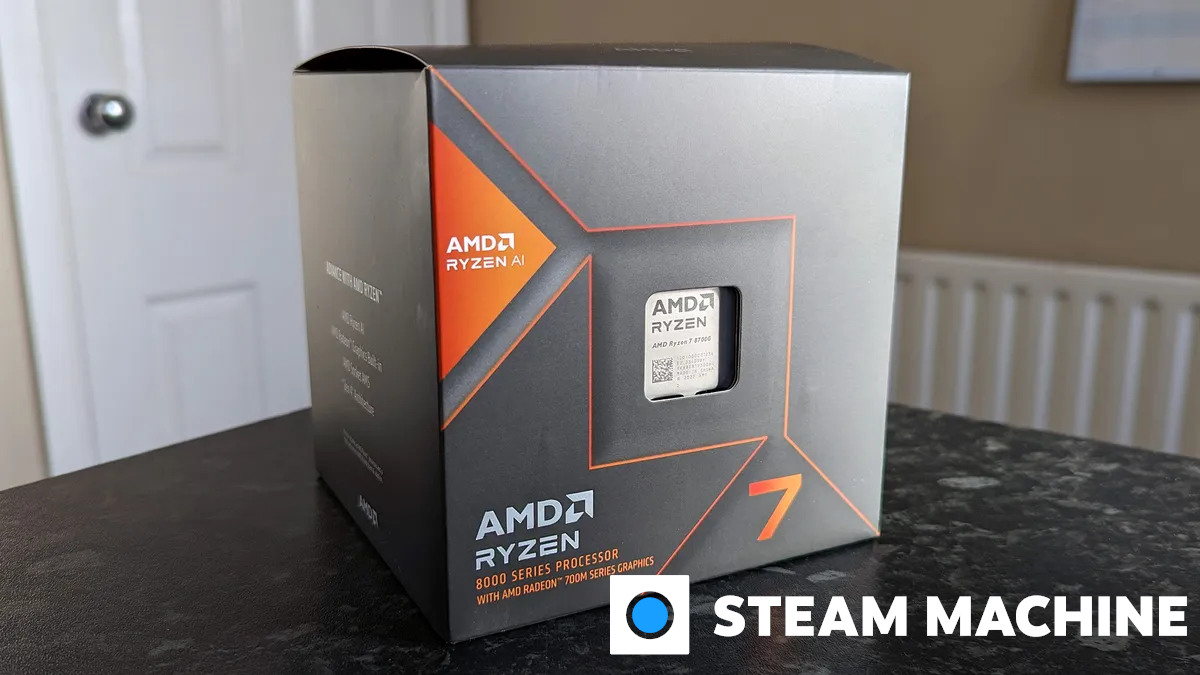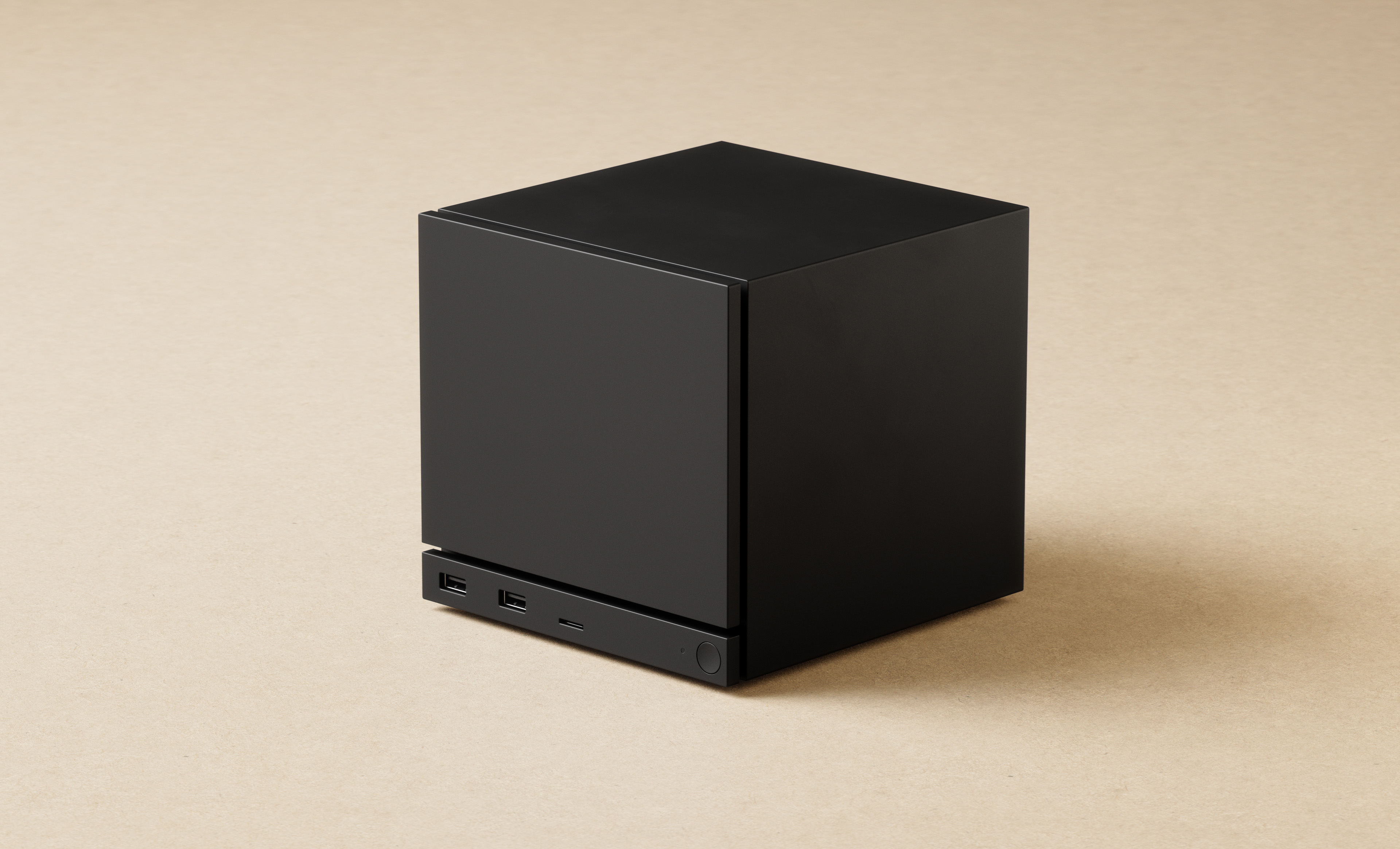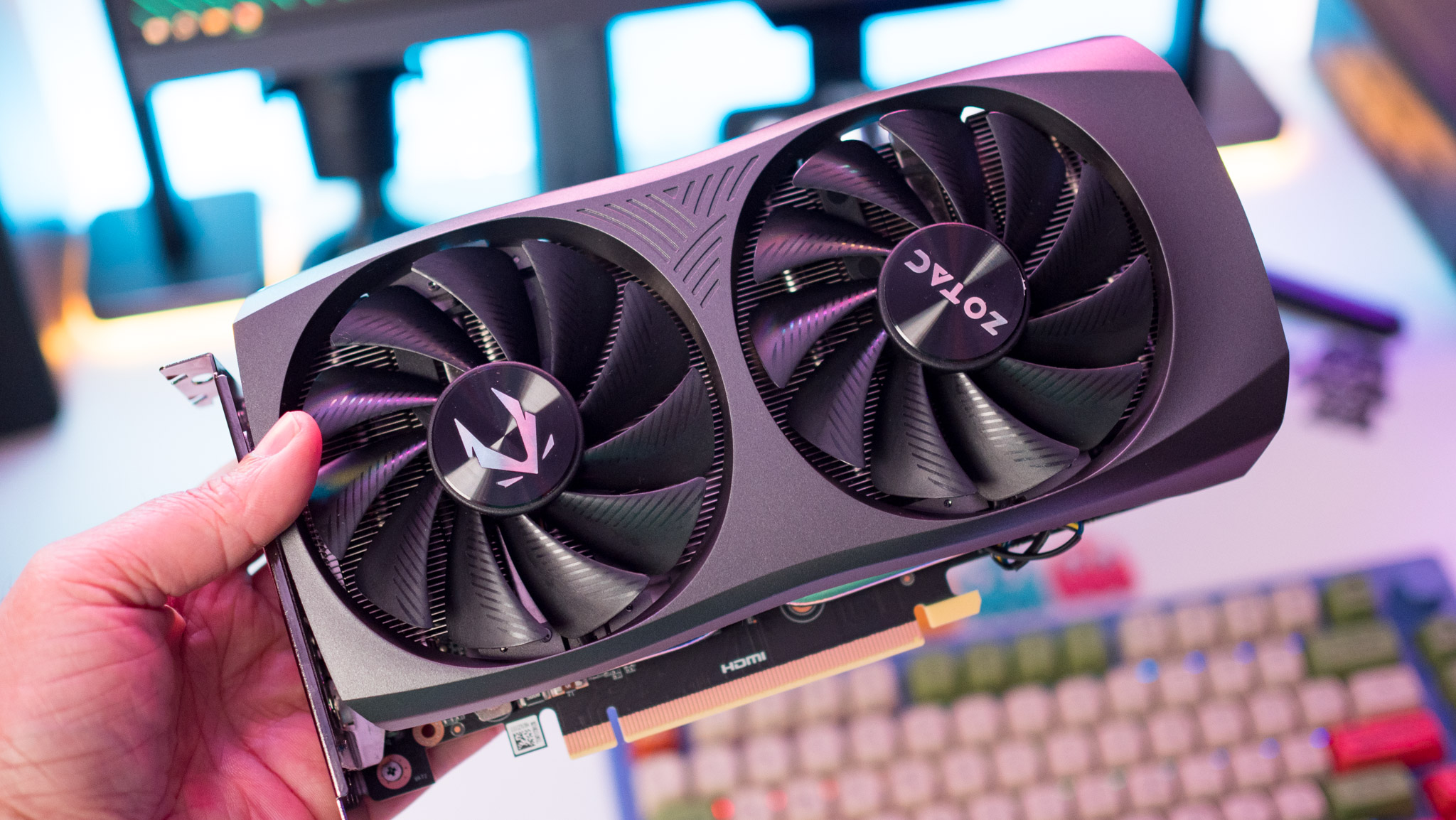
Valve announced the Steam Machine today alongside a new Steam Frame VR headset and a new Steam Controller. Following up on the success of its Steam Deck, Valve is clearly attempting to bridge the shrinking gap between console and PC gaming with its desktop Steam Machine.
The Steam Machine runs SteamOS and has some semi-custom parts inside, but it's essentially an AMD-powered mini PC with boosted gaming abilities. With an expected launch date of Spring 2026, I thought it would be fun to put together a couple of similar compact PC builds you can buy and assemble today.
What hardware does the Steam Machine include?
Valve's new Steam Machine runs on a six-core AMD Zen 4 processor and a semi-custom AMD RDNA 3 GPU with 28 Compute Units and access to 8GB of GDDR6 VRAM.
It supports ray tracing, and Valve claims that it can support 4K gaming at 60 FPS when using AMD's FidelityFX Super Resolution (FSR), a technique similar to NVIDIA's DLSS upscaling method.
System memory is set at 16GB of DDR5 RAM, and you can get storage in either 512GB or 2TB capacities. The Steam Machine has an internal power supply, Wi-Fi 6E compatibility, and I/O that includes DisplayPort 1.4, HDMI 2.0, 1Gbps Ethernet, USB-C, and USB-A.
Here's a closer look at the Steam Machine's specs.
Feature | Specifications |
|---|---|
Models | 512GB model and 2TB model. Can ship bundled with or without a Steam Controller. |
CPU | Semi-custom AMD Zen 4, 6C / 12T, up to 4.8 GHz, 30W TDP |
GPU | Semi-Custom AMD RDNA3, 28 CUs; 2.45GHz max sustained clock, 110W TDP; Supports 4K gaming @ 60 FPS with FSR; Ray tracing supported; Over 6x more powerful than Steam Deck. |
Memory | 16GB DDR5 + 8GB GDDR6 VRAM |
Storage | 512GB & 2TB SSD models; microSD card slot for expanded storage / portable catalog. |
Power | Internal PSU, AC 110–240V |
DisplayPort 1.4 | Up to 4K @ 240Hz or 8K @ 60Hz; HDR, FreeSync, daisy-chaining |
HDMI 2.0 | Up to 4K @ 120Hz; HDR, FreeSync, CEC |
Networking | Ethernet 1 Gbps; Wi-Fi 6E (2x2); dedicated BT antenna |
USB | USB-C 10 Gbps (3.2 Gen 2); 4× USB-A ports (2× USB 3 front, 2× USB 2 rear) |
Controller Radio | Integrated Steam Controller 2.4GHz radio |
Compatibility | Works with other controllers, accessories, and PC peripherals |
Wake Function | Wake with Steam Controller |
OS | SteamOS (like Steam Deck); Gaming-first UX; Fast suspend/resume; Steam Cloud saves + full Steam features. |
LED Bar | Customizable colors & animation; Reflects system status (downloads, booting, updating) |
Price | Unknown |
Launch Date | Spring 2026 |
How to build your own Steam Machine before it officially launches
Although there aren't yet any official performance benchmarks for the Steam Machine, it's not too hard to put together a custom system that can deliver similar PC gaming power in a compact case.
I've actually put together two theoretical builds, one using a discrete GPU and the other using one of AMD's APUs with an integrated graphics chip, further reducing costs.
I've excluded an operating system since you can install SteamOS on a desktop PC or use one of the free Linux-based alternatives made specifically for gaming, like Bazzite.
How to build a Steam Machine competitor using an AMD APU
Let's start with the more affordable version using an APU first.
- APU: AMD Ryzen 7 8700G — $259 at Newegg
- GPU: Not required (included with the CPU)
- Motherboard: ASRock B650I Lightning Wifi — $160 at Newegg
- Memory: Kingston FURY Beast RGB (2 x 8GB) DDR5 — $92 at Amazon
- Storage: Kingston NV2 500GB M.2 PCIe 4.0 — $50 at Amazon
- Case: Thermaltake Core V1 Mini ITX — $50 at Amazon
- PSU: Thermaltake Smart 500W 80+ — $40 at Newegg
- Total: ~$650 USD
Although this $650 build lacks the same power as a discrete GPU can deliver, it will nevertheless keep up quite well with the Steam Machine.
The Ryzen 7 8700G CPU has eight Zen 4 cores, 16 threads, and respectable Radeon 780M integrated graphics. It comes with a cooler, but you can always add something different if it can't keep up.
A 500GB SSD and 16GB of DDR5 RAM match the Steam Machine, and it's all built into a compact Mini ITX case.
Can the Ryzen 7 8700G hit the same 4K @ 60Hz ceiling that Valve has set for its Steam Machine? In some games, absolutely. In others, absolutely not. Steam's semi-custom GPU with 8GB of dedicated VRAM should prove to deliver a more stable experience.
How to build a Steam Machine competitor using a discrete NVIDIA GPU
The AMD Ryzen 7 8700G build I put together above is designed to keep costs as low as possible, and you'll have to make peace with lower frame rates.
If you'd like more power and access to all of the latest NVIDIA DLSS 4 features — including Multi Frame Generation (MFG) — a build with something like the RTX 5050 or RTX 5060 likely makes a lot more sense.
These cards each have 8GB of GDDR6 VRAM to match the Steam Machine, and both are capable of driving a 4K gaming experience at 60 FPS (as long as you don't mind using DLSS while turning down settings in more demanding games).
Here's a look at a build I put together.
- CPU: AMD Ryzen 5 7600X — $176 at Amazon
- GPU (Option 1): Zotac Gaming Solo RTX 5050 — $250 at Amazon
- GPU (Option 2): MSI Ventus 2X RTX 5060 8GB — $310 at Best Buy
- Motherboard: ASRock B650I Lightning Wifi — $160 at Newegg
- Memory: Kingston FURY Beast RGB (2 x 8GB) DDR5 — $92 at Amazon
- Storage: Kingston NV2 500GB M.2 PCIe 4.0 — $50 at Amazon
- Case: Thermaltake Core V1 Mini ITX — $50 at Amazon
- PSU: Thermaltake Smart 500W 80+ — $40 at Newegg
- Total: ~$818 (RTX 5050) or $878 (RTX 5060) USD
SteamOS still has some complications with NVIDIA GPUs, but the open-source Bazzite operating system should work just fine. And if you decide to go with Windows 11 instead, you'll have no problems with hardware compatibility.
Would you rather build your own Steam Machine?
Valve is hoping to capture some of the same magic it unleashed on the PC gaming world when it launched the Steam Deck in 2022.
The difference with the Steam Machine, of course, is that anyone interested can build their own system with relative ease as long as they're comfortable getting to know a PC's internals.
Valve has yet to announce an official price for the Steam Machine, but I'm placing my bets on it launching somewhere between $650 and $750. With Black Friday and Cyber Monday headed our way at the end of November, the custom PC builds I've put together could drop in price quite dramatically to threaten Steam's potential value.
Are you interested in the Steam Machine? What price is your cutoff point? Would you rather build your own system? Let me know in the comments section below!

Follow Windows Central on Google News to keep our latest news, insights, and features at the top of your feeds!

Cale Hunt brings to Windows Central more than nine years of experience writing about laptops, PCs, accessories, games, and beyond. If it runs Windows or in some way complements the hardware, there’s a good chance he knows about it, has written about it, or is already busy testing it.
You must confirm your public display name before commenting
Please logout and then login again, you will then be prompted to enter your display name.



